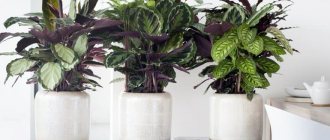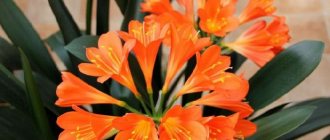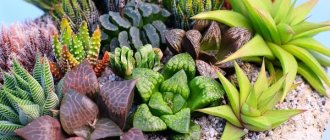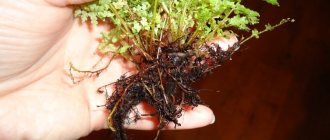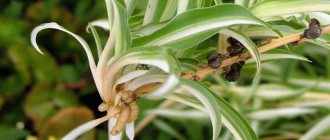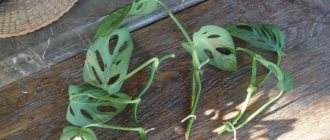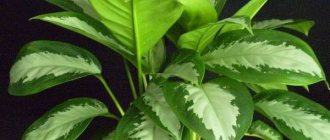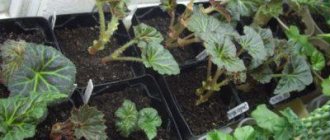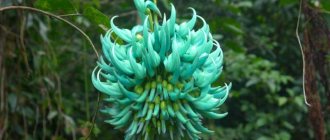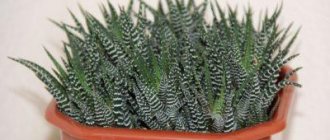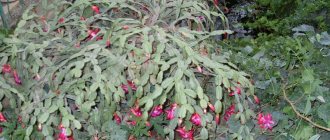No cozy apartment would be complete without house plants. Some bloom wildly and delight the eye, others remind of tropical countries, others curl, entwining everything with their greenery. What type of indoor plants to choose for your home to add zest to the decor?
Indoor plants can be divided roughly into flowering and non-flowering. The most popular are representatives of the flora, pleasing to the eye with their flowering. However, not all flowering plants can decorate a home for years.
Houseplants
Having chosen indoor indoor flowers, it is recommended to study their growing characteristics, watering regime, and the presence or absence of toxic substances in the juice of the green part. It happens that the housewife chooses a green beauty for her interior and is pleased with the carving of the leaf and its tall stature. Simultaneously with the appearance of a new potty tenant in the house, one of the family members may suddenly feel an attack of suffocation, especially with the windows closed. This is due to the fact that some plants emit toxic substances during their life, but attract people with their appearance.
Important! Such flowers can be safely kept in office premises in ventilated areas.
Types of indoor plants
From a scientific point of view, house plants are divided not only into flowering and evergreen. They can be classified according to a wide variety of criteria: according to climate zone, type of root system, method of reproduction and many others.
All indoor flowers are divided into three large groups:
- decorative flowering (spathiphyllum, anthurium, daffodils);
- decorative flowering potted plants (orchids);
- decorative deciduous (ivy, ficus, monstera).
Additional Information! Cacti are classified as a separate group, despite the fact that many of them are flowering, decorative, and potted.
Bulbous plants
Flowers propagated by bulbs are considered one of the most spectacular in appearance during the flowering period. Many are able to delight for a long time with bright colors and bizarre bud shapes. Among them are zephyranthes, clivia, amarcinum, ledeburia, villota, and hemanthus. All bulbous plants love warmth, light and moisture. Therefore, if a representative of this class does not bloom for a long time, you should pay attention to the composition of the soil, timely watering and the amount of sunlight received by the flower.
Clivia
Indoor trees
The so-called indoor trees have become widespread. They are miniature copies of wild giants, attracting the gaze of everyone who notices this miracle. The most popular representative is the Bonsai tree. Exotic appearance, strong trunk and thick green crown are all the advantages of this Chinese plant.
Important! If you want to add something unusual to your interior, it is not necessary to plant foreign trees - the domestic lemon tree has lush greenery and can produce small fruits throughout its life cycle.
Other equally well-known ornamental trees include: bottle tree, ficus, crassula (money tree), and rose.
Bromeliads
This is the name of flowers, mainly with short trunks and a bunch of leaves collected in a rosette. The most popular is pineapple. Almost all representatives of this class bloom with unusual flowers of bizarre shapes, which is what gave them such popularity: bromeliad, guzmania, acanthostachys, nidularium, tillandsia, vriesia.
Ampelous plants
Ampelias are home flowers with climbing shoots. They are planted in hanging pots, allowing the long branches to hang freely. Interior decoration in a vertical direction. Cissus belongs to the hanging variety; it is called indoor grape or climbing birch. It is widely distributed among vine lovers. Cissus does not bloom. There are a number of flowering ampelias, among which petunia, as well as surfinia, hoya and fuchsia, are popular.
Succulents
This class breaks all records of vitality. The most unpretentious plants, as a rule, do not require large pots and close attention. Designers like to use them in creating various compositions of potted flowers, because the pot can be successfully replaced with a glass hemisphere with a small amount of substrate.
Asparagus
Asparagus is an indoor perennial flower. With proper care, it will decorate your home for at least 10 years. Let's start by choosing a location for the asparagus. A window that faces east or west is best. Here the flower will receive enough light and at the same time will be protected from direct sunlight. Asparagus is a heat-loving plant, so in the summer it would be a good idea to take it out into the yard or onto the balcony. If the flower is in comfortable conditions for it, you will see it yourself - its leaves will be a rich green color. If the asparagus begins to turn yellow and crumble, then it is worth reconsidering the methods of caring for it.
The varieties of indoor plants amaze with their diversity. Today we have focused on only a few of them. Flowers in your home are an excellent solution for interior decoration. When choosing indoor plants for your home, be sure to pay attention to where it will be located and how often you can water and fertilize it. For example, for a large living room, it is better to choose potted palm plants that require a large space. Deciduous plants that will not irritate you with a pungent odor are suitable for the bedroom. But you can safely place flowering ones in the kitchen. It is better to place pots with cacti near the computer in the children's room, which will absorb harmful radiation.
Large indoor flowers
Home indoor flowers blooming all year round
Large plants are often used to decorate offices, sales areas, lobbies, and lobbies. They enrich the air with oxygen and give comfort to non-residential premises.
Large plants
Indoor flowers with large leaves
Large-leaved flowers are also grown in apartments. The exotic look of spotted large greenery visually changes the interior, adding color. In small spaces, decorators tend to place one or two green accents. Favorites of modern trends are calathea, monstera, aphelandra, and fern.
Flowers with fleshy leaves
Crassula, or money tree, has thick, dense leaves. It does not grow quickly, but with the correct formation of the crown, you can achieve a striking resemblance to a tree. Many succulents, due to their ability to accumulate liquid in green tissues, have thick leaves. Zamioculcas can be safely included in the list of plants with fleshy, dense leaves.
Drug group
Lovers of indoor flowers notice their effects on health and mood. Some species have healing properties, so it is useful to place pots with such plants in work areas, bedrooms and children’s rooms.
Famous medicinal flowers:
- geranium;
- Sansevieria;
- Kalanchoe;
- aloe;
- Golden mustache.
Geranium occupies a leading place in floriculture. It attracts attention with bright caps of flowers, and the plant also purifies polluted air. Pelargonium with red petals has strong healing properties. It has a sedative and anti-inflammatory effect on the body. Medicinal decoctions from geranium normalize heart function, heal chronic diseases of the digestive tract, and lotions cleanse the skin of ulcers and boils.
Sansevieria is also called pike tail or mother-in-law's tongue. The plant kills infections that live in the air. A tincture on its leaves helps heal appendages, and decoctions strengthen the immune system during flu epidemics or other colds.
In Russia and neighboring countries, a particularly popular indoor flower is Kalanchoe, or homemade ginseng. It is used to treat fistulas, ulcers, boils and wounds. Juice is extracted from the leaves of the plant, which must be filtered and sterilized. Then a piece of gauze is soaked in it and applied to the sore spot. And to strengthen the immune system, you can eat one tablespoon of babies every day - growths that are cut from the leaves. They are also added to salads.
In the Russian botanical atlas there is another famous medicinal plant - aloe, or agave. Its juice heals wounds, softens corns, and cleanses the skin of acne. The liquid is added to face and hair masks, and whitening scrubs are prepared on its basis.
Golden mustache, or callisia, is also known for its healing properties. Decoctions and tinctures are prepared based on the leaves. They help with burns and lichen, speed up metabolic processes in the body and lower blood sugar levels. The golden mustache also eliminates the symptoms of heart disease, strengthens the immune system and normalizes the functioning of the gallbladder.
Small indoor plants
Among beautiful indoor flowers, miniature representatives of the flowering plant world occupy a special place. They were created artificially by breeders and are exact copies of their full-sized ancestors.
Mini violets
Types of ferns - indoor and house plants
The scientific name is dwarf synpolia. The leaves and the plant itself are several times smaller than the progenitor, but this does not affect flowering. Mini violets bloom as brightly and unforgettably as their full-sized relatives.
Miniature Kalanchoe
The bred miniature Kalanchoe will not grow more than 15 cm in height. Dwarfism did not affect flowering; these babies bloom with beautiful cream or red flowers.
Important! Decorativeness and miniature size do not complicate the process of caring for the plant. It still loves timely watering.
Mini gloxinia
Miniature gloxinias do not require special care and maintenance conditions. They bloom, like normal-sized gloxinias, in the summer. After flowering for the winter, the plant goes into a dormant period. The leaves die, leaving one tuber, from which a new green part will sprout in the spring, followed by flowering.
Mini roses
Potted beauties, reminiscent of their garden relatives, although smaller in size, have not lost their pink feature - a typical aroma. The plant blooms just as beautifully, with leaf shape identical to life-size roses. Apartment maintenance requires compliance with the temperature regime - mini-roses die at high temperatures. The optimal indicator for growing and flowering is +18˚С. Already at +22˚C the plant becomes hot and it may die.
Mini roses
Fittonia
A small indoor flower loves warmth and diffused bright light. Fittonia attracts with its interesting leaf pattern - clear white lines contrasting with the greenery make the foliage look like a quail's egg.
Soleirolia
An indoor flower with miniature leaves has ampelous shoots. Saltirolia does not require special care. As an addition to regular watering, spraying can be noted in the hot season.
Introduction
Flower plants have not only aesthetic, but also great sanitary value and protect cities and towns from smoke, exhaust gases, dust, etc.
Many plants have phytoncidal properties. Parks, gardens, avenues and boulevards are special arteries that purify the polluted air of the city.
Planting trees and shrubs significantly smoothes out the amplitude of temperature fluctuations, increases air humidity on hot days, and also has reclamation and water conservation value.
Green spaces are especially important for combating various industrial and road noise.
A set of solutions for ecological construction includes the transformation of natural forest areas located near large settlements into landscaped forest parks. Great importance is attached to landscaping the areas of factories, farms, children's institutions, etc. New residential areas are accepted by the commission only after landscaping work has been carried out there. All this is one of the most striking indicators of the growth of the country’s cultural level.
Fresh flowers are needed all year round. They are used to decorate green spaces, as well as to obtain cuttings from open and closed ground, which are used for various types of arrangements (bouquets, baskets, compositions, etc.).
Many flowering plants have not only aesthetic, but also utilitarian value, i.e. they are used in the food, petroleum and medical industries.
Popular flowering indoor plants
Indoor flowers and flowering plants with names
Despite all the diversity of flora suitable for indoor keeping, there is still a certain “standard set” of flowers living on window sills and in hanging flowerpots.
White indoor flower
Perennial spaciphyllum can be seen, if not in everyone, then in half of all flower growers. The perennial, which does not require special attention at all, pleases with its large white blooms. Breeders have developed varieties with large leaves. Giant spaciphyllums are not capricious; they bloom in the same colors as their classic relative.
Spathiphyllums of different sizes
Abutilone hybrid
Only gaining popularity is abutilon, a flowering tree-like flower. Can exceed human height. Flowering, depending on the variety, can be red, burgundy, orange, or coral.
Attention! To ensure abundant flowering, the plant should be placed on the sunny side of the home. Abutilon will survive in the shade, but will not show flowers.
Although he loves light, he cannot stand the heat. The maximum possible temperature in the spring and summer months should not exceed 22 degrees Celsius. In winter, this figure is even lower – +15˚С. With the beginning of the heating season, it is wiser to place the flower pot on a heated balcony, where it will be comfortable until spring.
Abutilon can be propagated by seeds collected after flowering. To obtain strong and disease-resistant plants, seed material must be hardened. They begin to sow in February - March, germination can take up to 3 weeks.
Gloxinia domestica
Close in appearance to violets, gloxinia has a significant difference - its root system is in the form of a tuber, and in winter it goes into rest. Each time after wintering, the tuber needs to be awakened in order to speed up the appearance of leaves, treating it with a solution of potassium permanganate for possible diseases and growth stimulants for active awakening. To help gloxinia recover from sleep, the tubers are placed on a peat cushion, regularly sprayed and kept at an air temperature of at least +23˚C. If the tuber looks wrinkled, with an uneven surface, it is no longer alive.
Gloxinia flowering
Important! Gloxinia does not tolerate direct sunlight; a lack of light will force the plant to elongate the stems and reduce the number of buds.
Venus flytrap
The predatory Venus actually hunts flies, thereby obtaining complementary food for itself, but this does not cancel regular watering. It is sensitive to the composition of water, so running water as a source is not suitable for it. The water must first be filtered. The flycatcher is light-loving and will not survive in the shade.
Calathea
The variegated beauty pleases with its leaves all year round. From spring to autumn it requires abundant watering and daily spraying. The most accessible calatheas for growing in apartments are Bachema, Veitcha, Makoya. Soft water without salt impurities is suitable for irrigation. You can replant the flower by carefully transferring it together with a lump of earth, having previously laid drainage on the bottom of the new pot. If you want to propagate the plant during spring replanting, dividing the bush is allowed. The shoots, along with the roots, are carefully separated from the main bush for subsequent planting.
Cacti and succulents
A popular group of plants in home floriculture, they do not require frequent care and have a number of biological features. In nature, they grow in arid areas where it rains only a few times a year. Thanks to its special structure, the plant is able to store moisture and use it as needed. Such plants are compact, have fleshy and succulent stems, and leaves can be of a wide variety of shapes. During flowering, many species have buds that open at night. Unlike succulents, cacti do not have leaves; their trunk is covered with fluff and many spines.
In turn, cacti are divided into 2 groups:
In nature, forest cacti live in tropical rainforests across a vast territory of South America, where they grow on trees as epiphytes. In indoor floriculture, such plants can be grown in hanging pots. This group includes:
Desert species are widespread in hot and dry areas of America. Most species are capable of blooming beautifully, but this is not so easy to achieve at home. Types of indoor plants belonging to this group:
- Aylostera,
- Ariocarpus,
- Astrophytum,
- Blossfeldia,
- Gymnocalycium,
- Cleistocactus,
- Lobivia,
- Prickly pear,
- Rebellion,
- Echinopsis.
The following types of succulents include:
- Adenium,
- Aloe,
- Bergeranthus,
- Gasteria,
- Glottiphyllum,
- Duvalia,
- Kalanchoe,
- Colophytum,
- Monantes,
- Pedilanthus,
- Roheya,
- Sansevieria,
- Crassula,
Houseplants that do not flower
Plants are not always planted indoors to contemplate the buds. Many evergreen representatives of the plant world that do not have flowers are loved by gardeners for their irresistible crown.
Cissus
Like wild grapes, it can grow over large vertical areas.
Ficus
The elastica variety has gained popularity for its dark glossy leaves. It grows into a fairly tall tree. There are varieties with weaving shoots.
Fern
With its gorgeous green spreading leaves, it reminds you of the tropics and creates a jungle atmosphere.
Ferns
Ferns have graceful, spreading leaves. The main feature is that they never bloom and reproduce by spores, division of rhizomes and brood buds. They can grow in partial shade and do not require close care, so ferns are recommended for beginners and are also well suited for landscaping offices and the foyers of public institutions.
Ferns include:
Tropical home flowers
Tropical representatives of the plant world surprise not only with their unusual appearance, but also with their non-standard way of keeping them.
Blue Tillandsia (Tillandsia cyanea)
One of the representatives of non-standard cultivation - some of its types are fixed on a board or driftwood.
Tillandsia blue
Homemade banana
It grows 1 meter in height in just a year, and with sufficient humidity and high temperature it can bloom and even bear fruit.
Streptocarpus
Important! A flowering tropical plant that requires abundant watering and frequent spraying.
The variety of species allows you to choose the flowering you like most: from cornflower blue to bellflower.
Palm trees
Palm trees are hardy, light-loving, and can grow up to several meters in height. Not all varieties bloom. The leaves come in various shapes - pinnate or fan-leaved, this name was given for its resemblance to bird feathers and a lady's fan.
This category of plants includes:
- Washingtonia,
- Coconut palm,
- Kariota,
- Liviston,
- Rapis,
- Date palm,
Beaucarney
This plant is popularly called the bottle tree because of its unusual bottle-shaped trunk. The homeland of this plant is Mexico. There it reaches a height of 10 meters and blooms with beautiful white flowers. Local residents use the hard leaves of bocarney to make hats and baskets. In our climatic conditions, the “bottle tree” does not grow higher than 1 meter and does not bloom.
